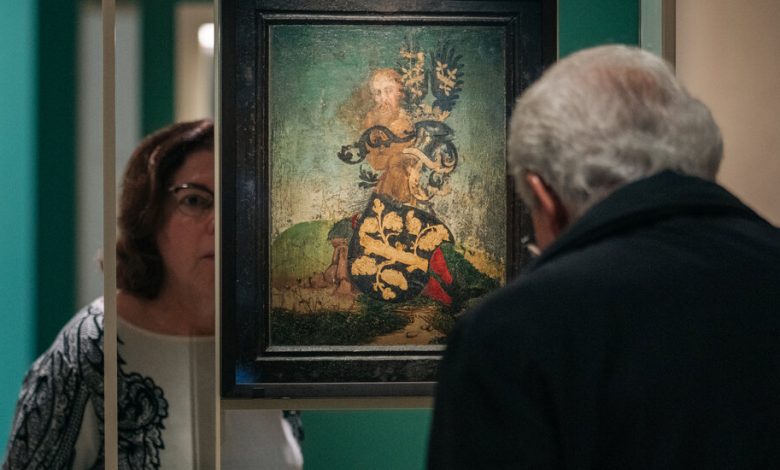Renaissance Portraits That Played Hide and Seek

The Met’s delightful show “Hidden Faces: Covered Portraits of the Renaissance” illuminates a curious trend in 15th- and 16th-century painting: the slow reveal. The works on view, originally concealed in special cases and behind sliding or reversible panels, gamify the experience of looking at portraiture; they have to be moved, before they can move us.
Of course, we can’t actually handle these artworks, many of them on loan to the Met from European museums including the Courtauld in London and the Uffizi in Florence. But we can peer at them from double-sided glass cases and watch animations of faces emerging from sliding panels. The covers are marvelous works in their own right, with elaborate emblems and allegories that are themselves a form of representation.
The interactions between the different components can be quite playful, with a literary and theatrical flair. A mesmerizing portrait of a Florentine lady in a flowing sheer veil, attributed to the early-16th-century Italian painter Ridolfo Ghirlandaio, is accompanied by a decorative panel with the Latin inscription “To each his own mask” and a trompe l’oeil face covering to match.
Among the show’s many examples of Netherlandish portraiture, a clever narrative unfolds through a double-sided work by Hans Süss von Kulmbach, a protégé of Albrecht Dürer. On the front is a bust-length image of a man who seems to be looking at the upper left corner of the painting — or, perhaps, he is gazing up at the woman sitting in a window who appears when the panel is flipped.
The Renaissance practice of covering paintings was rooted in earlier religious traditions and liturgical rituals, a point made in the show by a work borrowed from the Cloisters: a private devotional shrine with wings that open to display images of a female donor and her husband next to Saint Catherine.
